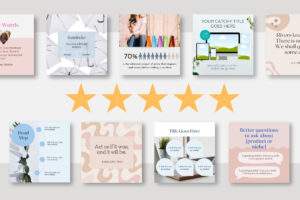
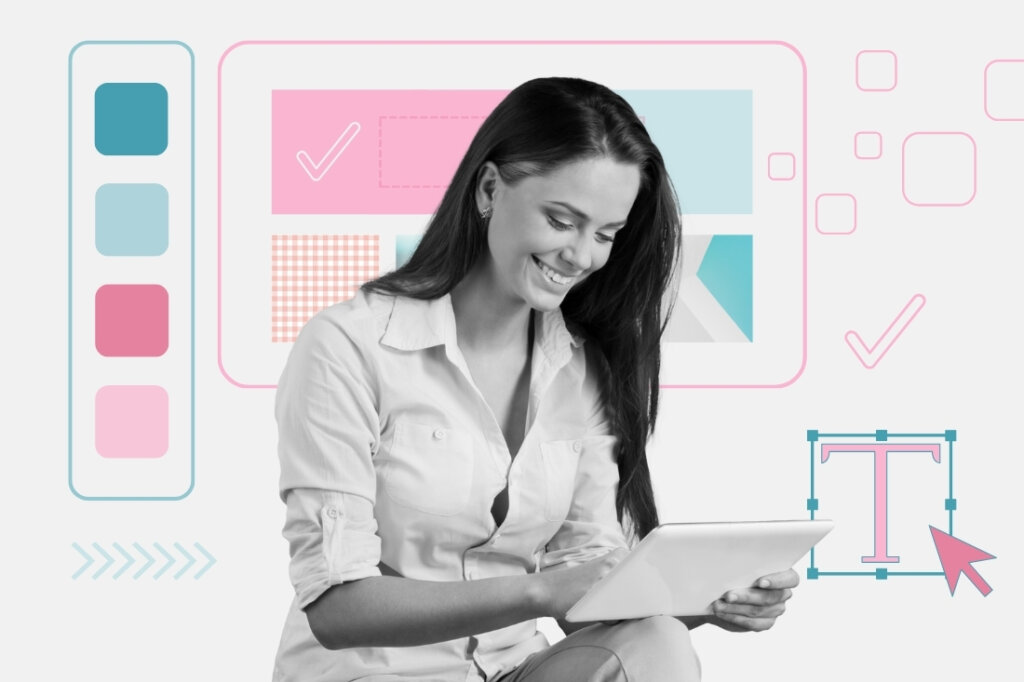
Before I get into ‘why design briefs matter’ and the key info to include in a design brief, I just wanted to clarify who this post is for…
This article is for both clients (the brief writer) and designers – aka the person who works to the brief.
So go and learn what to include in a good design brief, swipe the template, and find out what designers wish clients knew – and what clients wish designers understood!
I look at a design brief as being more than just a project outline – but also as a strategic guide that lays out the vision, objectives, and expectations.
Think of it as a roadmap, ensuring that everyone stays on the same page.
Without a clear brief, projects can quickly veer off course.
You receive the first draft, and something feels off. A few tweaks turn into endless revisions, and before you know it, weeks have passed in a frustrating cycle of back-and-forth messages.
From experience, I know that vague instructions opens the door to scope creep – which is when extra work is added beyond the original agreement.
Sound familiar? It’s not just you. Many small business owners and designers face the same struggle, leading to wasted time, frustration, and added costs for both parties.
A well laid out design brief prevents all of these sorts of issues. It sets clear expectations, helps reduce misunderstandings, and streamlines the creative process.
Whether you’re hiring a designer or working with a client, taking the time to create a thorough brief eliminates guesswork, minimizes those pesky revisions, and keeps the project on track from start to finish.
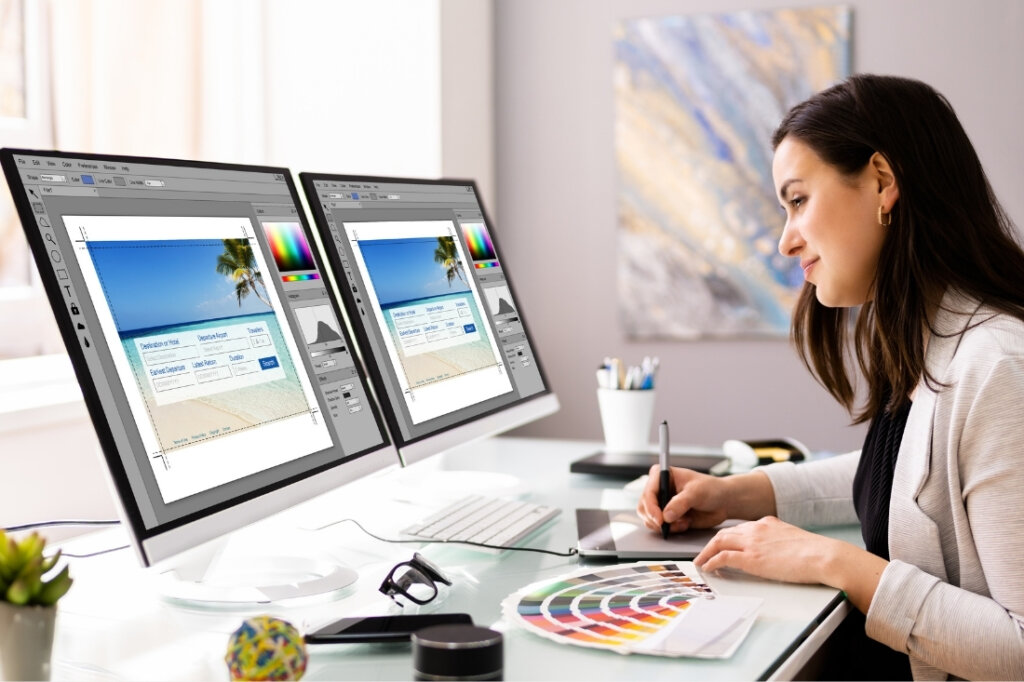
When writing a design brief for service providers like graphic designers, logo designers, and other creative professionals, I recommend that you first think about the following:
Clearly define what you need: Is it a new logo, social media templates, an email header, or a full branding package?
Specify the purpose of the design and how it will be used. For example, a website banner will need different specifications than a printed flyer.
Identify who will be making final design decisions and how long they need for approval. If multiple people are involved, streamline the process by designating a primary decision-maker to avoid conflicting feedback that slows progress.
List exactly what you expect to receive. Do you need PNG, JPG, or vector files? Should the design be optimized for web or print? For example, an ebook design will require different dimensions than a novel for print.
Be upfront about your budget, as this will determine the complexity of the design. If budget constraints exist, prioritize deliverables accordingly.
Clarify the number of revisions included – many designers offer two or three revisions, with additional changes incurring extra costs. Without this clarity, scope creep can become an issue.
Outline your brand’s personality through colors, font styles, and overall aesthetics. Are your brand colors pretty in pink or all about luxurious purple? Think beyond just visuals – consider the mood you want to evoke. Is your brand warm and inviting or sleek and modern?
Who is the audience for this design? Describe their demographics, interests, and behaviors. For example, a graphic targeting women aged 18-25 will have a different aesthetic than one meant for corporate executives.
Analyze your competitors – it’s also important to see what they are doing and what you can do to ensure that your brand stands out.
What is the primary message this design should communicate? Is it meant to establish trust, create excitement, or drive sales? Define clear objectives so that the design aligns with your business goals.
Set realistic deadlines and account for revisions, as rushing the creative process often leads to less-than-amazing results! If you need something urgently, be prepared to offer additional compensation for expedited work.
Provide examples of designs you admire and explain why you like them. Are you drawn to a particular color scheme, styling, layout, or typography?
To get design ideas and style examples, you can explore sites like Pinterest, Behance, and Dribbble for inspiration.
However, I recommend that you avoid direct copying, especially from competitors. Instead, use references as inspiration while ensuring your design remains unique to your brand.
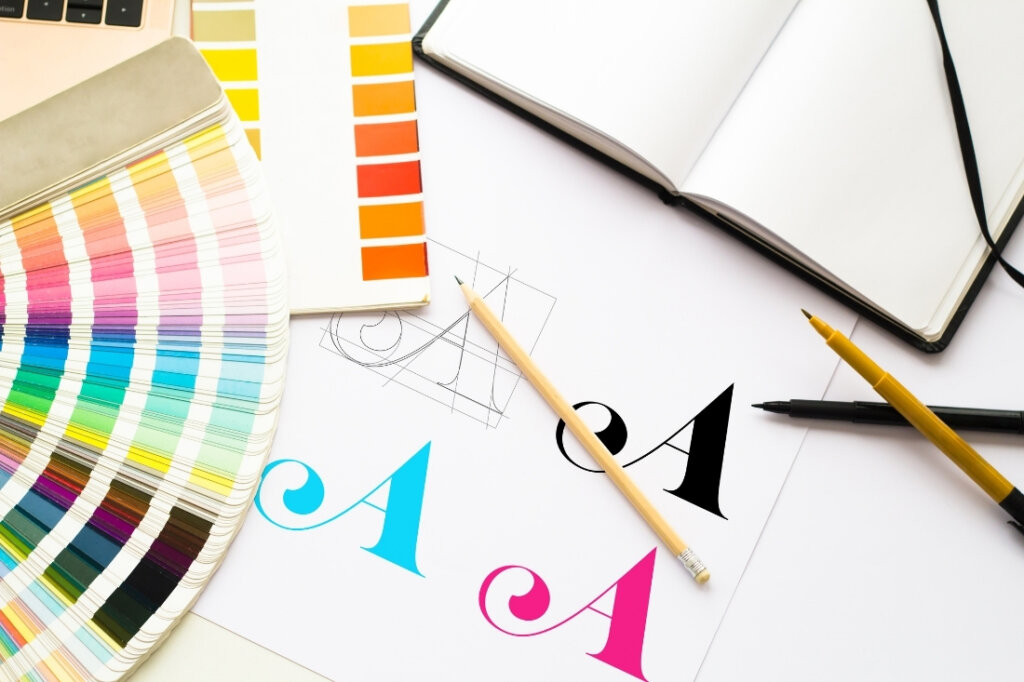
Ok, so what can this look like when all put together?
Below is a swipable design brief template that includes all key considerations and can be adapted for things like product launches, logo design, printed materials, brand repositioning, and social media campaigns.
Project name:
Client:
Contact:
Website:
Brand overview: Provide context for your brand and product/service. This should include your unique selling point, brand personality, colors (hex codes), and fonts.
The challenge: What problem are you trying to solve with this campaign? What message needs to be communicated or reinforced?
Target audience: Describe your ideal audience: demographics, interests, goals, behaviors.
Key message: Describe what should be communicated. For example, trust, excitement, professionalism, or urgency.
Main goal: Summarize the main purpose of this project. For example, attract new customers, increase brand awareness, or improve engagement.
Primary call to action (if any): Describe the action you’d like people to take. For example, encourage people to sign up for the newsletter with a ‘Join Now’ button.
Visual style & mood: Provide a few adjectives: minimalist, retro, feminine, high-end, etc.
Inspirational references: Include links, Pinterest boards, or attachments for reference.
Timeline and budget or package chosen: Include the package chosen (if relevant and the key dates such as the kickoff date, draft deadline, and the project deadline.
Deliverables: List what you expect, e.g., logo, Instagram templates, flyer, website banner.
File formats needed: For example, JPG, PNG, PDF, AI, SVG or editable templates like Canva templates or PSDs.
Size & dimensions: For example, Instagram square 1080x1080px, website banner 1920x600px, A4 flyer.
Resolution requirements: For print, specify 300dpi. For web, 72dpi is standard.
Additional info: Provide any extra details that might help.
Using a design brief template ensures that all the important project details are covered without clients having to start from scratch every time. This could be a design brief questionnaire, a step-by-step guide, or a fill-in-the-blank project spec.
Investing a little time in setting up these tools upfront leads to smoother collaboration, fewer revisions, and ultimately, better results.
My favorite top tip for working on a design project is setting up a shared Google Drive folder to share and keep everything organized and accessible. This ensures that all project-related files – brand assets, style guides, and reference images – are stored in one central location, reducing the endless back-and-forth of email attachments.
A shared drive also makes it easy to update documents, provide feedback, and track revisions in real time. Instead of scrambling to find a missing logo file or trying to recall the hex code for your brand colors, everything is readily available in one place.
Feedback is the bridge between an initial concept and the final product, but vague or unclear critiques can turn that bridge into a rickety rope ladder. Saying something like “Make it pop” or “It just doesn’t feel right” leaves too much room for interpretation.
Instead, give feedback with intention.
Start by pinpointing what’s working. “I love how the colors align with my brand – it feels cohesive.” This not only helps the designer understand what to keep but also frames the conversation positively.
Then, get specific about changes. Instead of “This isn’t quite there,” try “Can we adjust the font to something bolder for better readability?” or “I’d love to see a softer background to make the text stand out.”
It’s also helpful to explain why you want a change. “This shade of blue feels too corporate for my audience. Can we explore something warmer?” Explaining it in more detail like this saves time and avoids unnecessary revisions.
Design is a collaboration, not a guessing game. When feedback is direct yet flexible, the process becomes smoother, the results stronger, and the frustration levels lower – for both clients and designers.
Trust the designer’s expertise: Designers use years of experience to create functional, visually appealing designs that go beyond following instructions.
Design isn’t just about aesthetics: Good design is about communication and problem-solving, not just making things look pretty.
Why designers make certain decisions: Designers base their decisions on strategy, best practices, and the effectiveness of design elements, not personal preference.
Fast doesn’t mean easy: Quick turnarounds come from experience, and even simple designs often takes significant thought and refinement.
Clear communication makes everything easier: Vague timelines or expectations can lead to frustration and delays, so it’s important to have upfront conversations with clients.
Business goals matter more than trends: Designs should serve a business purpose, aligning with company goals rather than just following fleeting trends.
Clients appreciate guidance, not jargon: Clients rely on designers to explain concepts in simple terms, not overwhelm them with industry-specific language.
Deadlines exist for a reason: Sticking to deadlines is essential, as late designs can affect product launches or marketing opportunities.
✅ Are all essential details included?
✅ Would a stranger understand your vision?
✅ Are expectations clearly set for timeline, deliverables, and feedback?
I offer a custom graphics template design service that’ll give you a whole set of on-brand graphics that you can edit and update yourself in Canva whenever you need.
Share to…
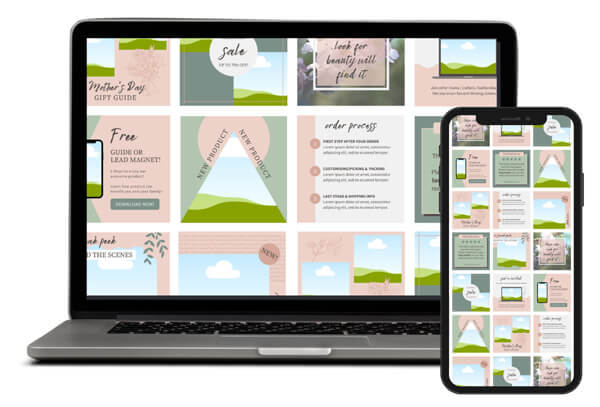
Sign up to get 10 free Canva templates for your social media.
Created with solopreneurs in mind, these templates offer a variety of content types to help boost your online presence!